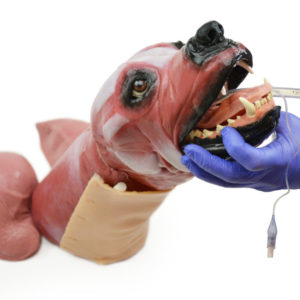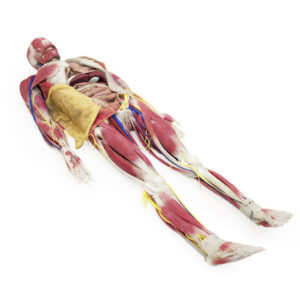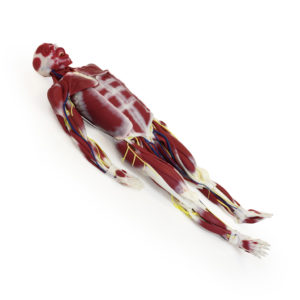CEDAR FALLS — If you can’t get a corpse, get the next best thing. That was the thinking behind the University of Northern Iowa’s recent purchase of four synthetic cadavers.
The units are called SynDavers, made by a Florida-based lab with the same name. The synthetic corpses are made of a rubberlike material that resembles the feel of human tissues.
About a month ago UNI bought four SynDavers with $150,000 in grant money to better teach human anatomy courses. Teachers said they were sick of students having to dissect cats.
“It’s good to get the dissection experience, but the cut doesn’t really mimic the complexity or the size you deal with human cadavers,” said Dr. David Saunders, head of UNI’s Biology Department.
Saunders said the school had nowhere to store actual cadavers, so the SynDavers were the next best choice.
Each unit has the right number of bones and organs. Plus, like a real cadaver, they can be examined and cut apart.
“The muscles are flexible. You can move those out of the way,” said Saunders. “They can see how they’re interacting with other muscles, where the nerves and blood vessels are.”
The examined body parts can then be replaced with new pieces, stitched back in and made ready for the next student. Teachers can even order abnormal body parts.
“Like an aortic aneurysm for instance,” said Mary McDade, UNI anatomy instructor. “We can order that and we can put it in the SynDaver. Then when students are doing their dissection and exploration, they’ll be able to find this abnormality. Then another won’t have it. They can compare normal to abnormal.”
UNI purchased the more basic SynDaver models. Upgraded versions go for $100,000 apiece and mimic living humans. They’re designed for medical research and have functioning synthetic organs. They can even bleed and breathe.
Students in summer anatomy courses will be the first to use UNI’s models.
If you want to know more about SynDavers, the Tampa Bay company will appear on ABC’s Shark Tank this Friday, 7 p.m. central time.





